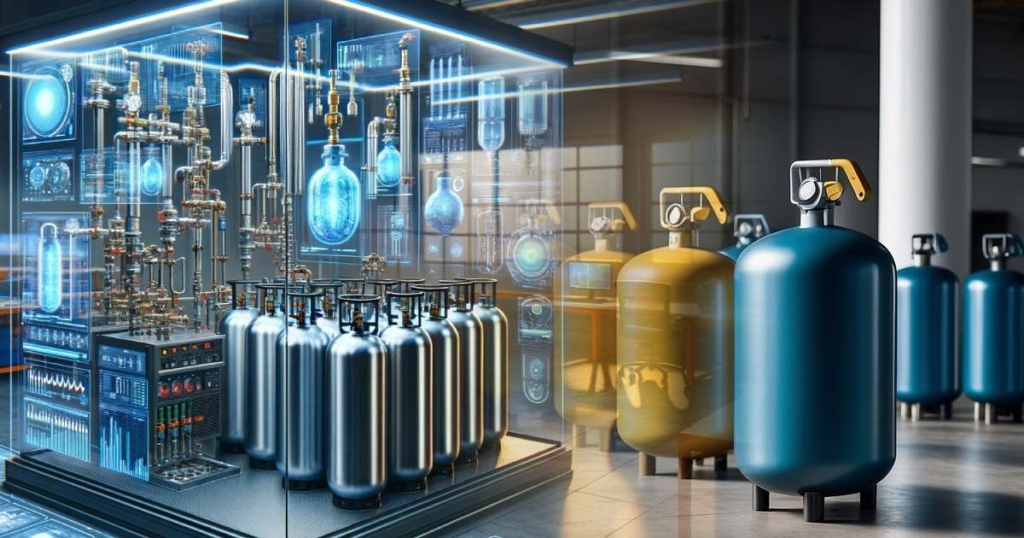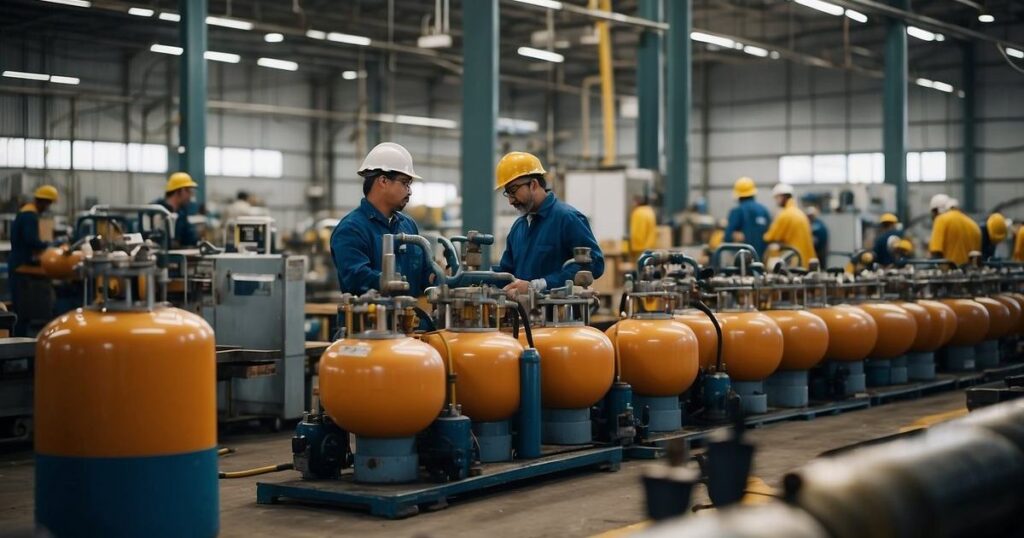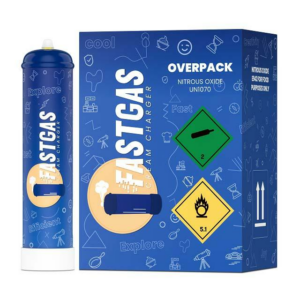Gas Cylinder Innovations: Revolutionising Energy Storage and Safety
FastGas Blog
In the dynamic world of industrial gases, gas cylinder innovations play a pivotal role in enhancing operational efficiency and safety. Companies like Gas Innovations are instrumental in leading the charge by providing an array of high-purity hydrocarbons and a diverse fleet of cylinders catering to small and large-scale projects. The gas cylinder market is experiencing a significant transformation as it adapts to the increasing demands of safety standards, environmental considerations, and the urgent need for decarbonisation.
Furthermore, the integration of smart technology drives the advancement in gas cylinder technologies. The inclusion of IoT (Internet of Things) connectivity and sensors allows for real-time tracking of gas levels, pressure, and potential leakage. These developments not only contribute to the safe handling of gases but also optimise the supply chain and reduce operational costs. As industries endeavour to cut carbon emissions, the role of gas cylinders in distributing alternative fuels like hydrogen becomes more pressing.
Key Takeaways
- Gas cylinder innovation is central to improving safety and efficiency in the gas industry.
- Smart technology integration is transforming cylinder monitoring and management.
- Evolving gas cylinders are pivotal for alternative fuel distribution and environmental efforts.
Advancements in Gas Cylinder Technologies
In addressing the innovations in gas cylinder technologies, you must be aware of the latest strides made in smart system integration, material development, adherence to stringent regulations, and also the significant role this sector plays in environmental impacts and the energy transition.
Smart Cylinder Systems
Advancements in smart cylinder systems are revolutionising how you monitor and manage your gas storage. We now equip cylinders with sensors for real-time data tracking to enhance safety and efficiency significantly. For example, with innovations from Fast-Gas, you can anticipate a future where you will receive instant updates on pressure levels, remaining gas volumes, and even predictive maintenance alerts.
Materials and Manufacturing
The materials used for manufacturing gas cylinders are pivotal in pursuing cutting-edge design. Also, new, lightweight nanomaterials provide superior adsorption capabilities, and the shift towards using aluminium or composites reduces the weight of your cylinder, thereby decreasing the transportation cost. This also impacts longevity and recyclability, ensuring that cylinders are more efficient and sustainable.
Regulations and Safety Protocols
Your safety is paramount; thus, adherence to regulations and protocols is non-negotiable. Manufacturers constantly update Safety Data Sheets (SDS) to reflect the most current information on handling and storage. Robust regulations govern the industry, overseeing the entire lifecycle of a gas cylinder from design and manufacturing to usage and disposal while maintaining the highest safety standards.
Energy Transition and Environmental Impact
The role of gas cylinders in environmental conservation and energy transition cannot be overstated. Innovations from companies like Fast-Gas focus on reducing emissions, especially in fossil fuels like natural gas and Liquefied Natural Gas (LNG). The transition to Compressed Natural Gas (CNG) and the inclusion of hydrogen technology reflect a commitment to greener energy alternatives and improved air quality. Cylinder innovation is also key to minimising the industry’s carbon footprint by enabling the efficient use of these cleaner fuels.
Industrial and Consumer Applications
In gas cylinders, you will find innovations that significantly impact industrial and consumer applications, with each sector benefitting from bespoke solutions.
Sector-Specific Solutions
You will observe that diverse sectors utilise specialised gas cylinders for various applications. In healthcare, high-purity hydrocarbons like ethane, butane, and isobutane are integral for multiple medical procedures. Businesses operating in the manufacturing sphere depend on gases like nitrogen, helium, and argon for processes such as welding and preserving the integrity of products during packaging. Each industry requires gases that meet specific purity and compositional standards to ensure reliable and effective operations.
- Methane (UN1971) and Ethane (UN1972) are utilised as high-energy fuels or feedstock in chemical processes.
- Butene, n-Butane, and Isobutylene are often found in applications requiring a high degree of refinement, such as in producing plastics and resins.
- Propylene is employed in the creation of plastics and the pharmaceutical industry.
Refrigerants and Cooling Systems
The advent of refrigerants such as R600a (isobutane) and natural gas-refrigerated liquids like methane and ethane has brought about a sustainable change in cooling systems. Due to their low environmental impact and efficiency, you can find these refrigerants in both industrial and domestic appliances. Moreover, they are rapidly becoming the go-to choice to replace traditional CFCs, HFCs, and HCFCs, mitigating the environmental risks of older refrigerants.
- Ethylene serves as a refrigerant in large-scale applications, including LNG production.
- Hydrogen chloride provides utility in refrigeration systems that demand high levels of corrosion resistance.
Alternative Fuels and Mobility
The push towards sustainable energy sources has fostered innovation in gas cylinders serving as storage units for alternative fuels. For mobility solutions, you will also notice that cylinders now store compressed natural gas (CNG) and hydrogen, propelling the automotive sector towards a cleaner future.
- Natural Gas (as CNG): offers a cleaner alternative to traditional petrol and diesel, with vehicles modified to accommodate these gas cylinders for fuel.
- Hydrogen: next-generation fuel for vehicles, stored in advanced high-pressure cylinders.
Companies such as Fast-Gas have been instrumental in pioneering these gas cylinder innovations, ensuring that you, the consumer or business, have access to cutting-edge features in the gas cylinder market that address your specific needs across a wide range of applications.
Frequently Asked Questions
In this section, you’ll discover definitive answers about the latest innovations providing safety, efficiency, and environmental sustainability in the gas cylinder industry.
What are the latest advancements in gas cylinder technology?
Recent developments in gas cylinder technology have created lightweight cylinders using composite materials. This has significantly enhanced their safety profile and made transportation and usage highly efficient.
How has natural gas storage improved with recent innovations?
Innovators have developed highly pressurised storage solutions and improved the quality of materials used in the cylinders, ensuring that natural gas storage is more secure and better suited to meet modern demands.
What safety features have been introduced in modern gas cylinders?
Modern gas cylinders now come equipped with upgraded valve systems for better gas flow control and advanced materials to prevent corrosion. There are also rigorous inspection protocols to ensure the integrity of cylinders before release.
How are designers making gas cylinders more environmentally friendly?
Designers are creating gas cylinders with longer life spans and adaptability for refilling to reduce environmental impact and decrease the necessity for frequent replacements. Additionally, more easily recycled materials are being incorporated into the manufacturing process.
What are the most significant changes in gas cylinder manufacturing processes?
Manufacturers have started implementing automated systems for precision in cylinder production, enhancing consistency and safety standards. Advances in material sciences have also influenced the shift towards less energy-intensive production methods.
How are innovators adapting gas cylinders for new and emerging applications?
Manufacturers are evolving gas cylinders to cater to sectors like food, medicine, and electronics, as well as packaging high-purity hydrocarbon gases to meet stringent industry standards. Also, innovations include corrosion-resistant cylinders and speciality packaging to reduce contamination risks.







